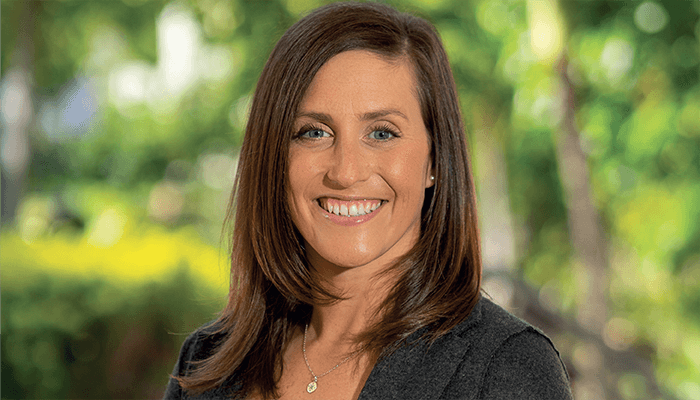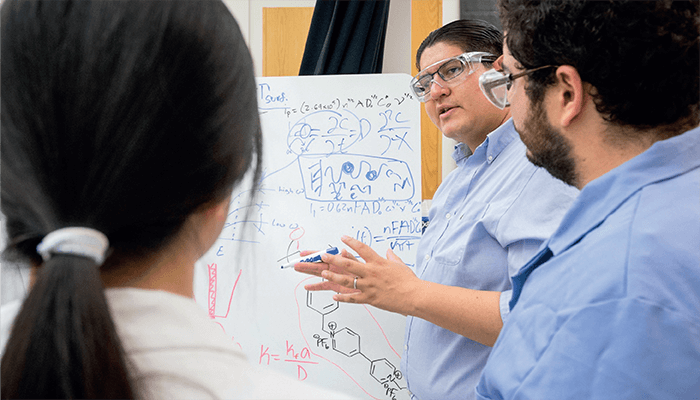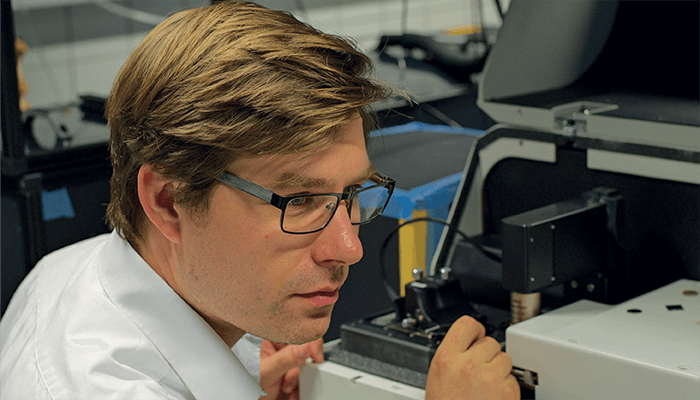James Grinias: Financially supported programs are sorely needed to help improve recruitment efforts designed to broaden participation in the analytical sciences. Although a few small initiatives in this field have been established, there is significant room for growth. Senior scientists should also make efforts to improve the way they mentor young scientists from a variety of backgrounds. We can’t expect change if we don’t work for it.
Ashley Ross: When it comes to creating equitable and inclusive spaces for scientists, I think we have a lot more to learn. We get caught up in improving diversity across all sectors, but we miss the mark when we don’t also focus on creating equitable and inclusive environments. Retention of women and underrepresented scientists is a real issue and I don’t think analytical science is protected from that. There have been improvements over the years, but we should not be complacent. I would love to see more of a “bottom-up” approach to addressing these issues; at times, it feels very top-down. A bottom-up approach would enable more voices who are directly impacted by the inequities to be heard.
Laura Sanchez: Being a “top scientist” should encompass multiple duties. Being a great researcher is, of course, one, but being dedicated to improving diversity, equity, and inclusion should be valued as an equal priority.
Katelynn Perrault: There is currently major pressure on institutions, organizations, and agencies to promote a diverse, equitable, and inclusive workforce. It’s great to see so much active change. At the moment, some of my favorite networking and symposia have been those that celebrated diversity. I can’t wait for the day when we don’t need to hold specific awards, sessions, and committees for minoritized groups because they are already represented in a truly authentic way within the field. The next obstacle to tackle is the retention of women and minorities within the chemical sciences at critical stages of careers when disenfranchisement can occur. I’ll be excited to see career development and support opportunities that target this problem.

Joaquin Rodriquez Lopez: I was born in Mexico. I had the privilege of studying at a great undergraduate institution (Tec de Monterrey), but access to sophisticated instrumentation was quite limited. The lack of technology throughout countries in Latin America is a running theme. Many of my postdocs, collaborators, and friends travel hours to find a suitable facility or wait for an international trip to do their experiments. I think the solutions to these problems are multi-pronged. Including scientists from all parts of the world in state-of-the-art experiments will require facilitating exchanges and even international programs to swap instrumentation. I also think analytical chemists can solve complex problems using strategies, materials, and techniques that allow anyone in the world to participate in world-class science, which I hope the community can support.

Bob Pirok: Our chemistry and analytical sciences joint graduate degree has just started its first semester of the year. We have 76 students enrolled for this year’s theoretical classes. The one running in September happens to be separation sciences, which covers the fundamental concepts of two-dimensional liquid chromatography (2D-LC), 2D gas chromatography (2D-GC) and capillary electrophoresis (CE). Of our 76 students, 40 are female – a majority! This is not a surprise, because at the Centre of Analytical Sciences, The Netherlands, we have, in recent years, regularly seen women make up a significant portion of our students. What’s striking is that, despite always having many female students, I do not see these numbers being replicated at conferences or in our own faculty.
From a teachers’ point of view, I think to myself, “Many of these women will have a decreased likelihood of climbing the ladder, even in 2022.” How can a teacher stand comfortably in front of a class knowing that their students will not all have the same opportunities? Our sole reason for teaching is to pass on knowledge to give our students opportunities. I have not even mentioned other diversity angles, such as cultural background, which in the Netherlands has also proven to be a problem. This is extremely serious; it means a lot of great discoveries by these scientists-to-be may never happen…
Andrew Ault: In analytical chemistry, our ability to listen to new, underrepresented voices helps us broaden our thinking. Analytical chemistry benefits when we incorporate people from different scientific fields and with different educational experiences. As future leaders in the field, challenging ourselves to be open-minded and inclusive is something we should all strive toward in our research labs.
Georg Ramer: I see the irony in answering this question. As the son of parents with doctorate degrees, I am a member of a demographic that is overrepresented in academia. I will answer this question based on what I have learned from talking to colleagues and friends from underrepresented demographics.
There are several issues that analytical sciences and academia are facing in terms of diversity, equity, and inclusion. When we try to make our field more equal, diverse, and inclusive, we have to ask ourselves two questions: i) who goes into academia or a specific field and ii) who stays in academia? There are several aspects to the first question. For example, female students can feel like they don’t “belong” in certain fields that are “stereotypically male,” have an ostentatious “male nerd” culture, or have not done enough to address harassment and assault. Further, students will be more reluctant to go into a field that has no role models to whom they can relate. In recent years, the community (professional organizations and academic institutions) has recognized these issues and striven to address them.
The second question – who stays in academia – is somewhat trickier to address. Unconscious bias makes it harder for people who have to do care work alongside their day jobs (mostly women) and for people without wealthy parents (a distinction correlated with both ethnicity and parents’ level of education) to be successful.
Academia tends to treat graduate students like school children who are expected to be grateful for the opportunity to work (for low wages or even for free, and with irregular schedules and frequent overtime), rather than as qualified professionals. We don’t always allow the smartest people to stay in academia, but instead favor those who can afford it because they don’t immediately require a living wage and will risk the financially disastrous gamble of working toward tenure.
This is further exacerbated by the fact that the “ideal” academic workday and the “ideal” CV seem more fitted for a time where men were the sole breadwinners and their wives followed them around to take care of children and relatives. This hasn’t been the reality in the workforce for some time and academia needs to adapt. Otherwise, all the programs and actions implemented to increase equality and diversity in a scientist’s early career are somewhat pointless; the people they are supposed to help are forced out of academia before they can reap the benefits.





